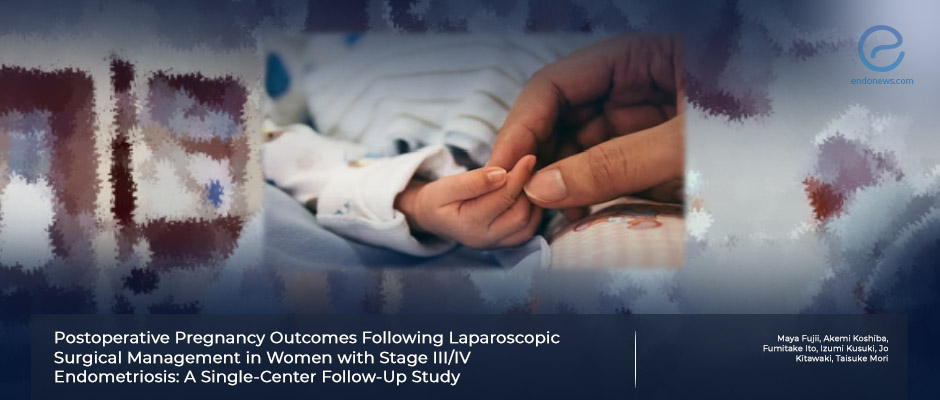Deep infiltrating endometriosis and postoperative pregnancy outcomes
Nov 23, 2023
The pregnancy rate is high after the conservative surgery of deep endometriosis.
Key Points
Importance:
- The priority for the treatment of endometriosis-associated infertility associated with deep infiltrating endometriosis patients is still controversial.
Highlights:
- The study reveals that after conservative laparoscopic treatment of rASRM stage III/IV endometriosis: More than 70% pregnancy rate could be achieved and endometriosis fertility index EFI scores are good predictors for postoperative pregnancy.
What's done here:
- A Japanese team from Kyoto Prefectural University reported the postoperative pregnancy outcomes of deep endometriotic patients recorded as rASRM stage III/IV in their facility.
- This nine-year follow-up single-center study examined the pregnancy rate and EFI scores of women who had postoperative ART and those who were not treated.
- Seventy-one patients were included in the analyses, and 40 of them had infertility problems while having a regular unprotected relationship with their male partners.
Key Results:
- A total of 54 patients out of 71 who were diagnosed with rASRM III/IV endometriosis were conceived after the conservative laparoscopic surgery (the overall postoperative pregnancy rate: 76%).
- When the analyses were limited to 40 patients who suffered infertility before the surgery, 28 got pregnant postoperatively, with a pregnancy rate is 70% (the majority were in the non-ART group)
- The Endometriosis Fertility Index score was higher in the group that became pregnant, compared to the group that could not be pregnant postoperatively.
Limitations:
- The study has a small sample size and was a single-center study.
Lay Summary
Although the current ESHRE guidelines state that there is no strong evidence to support surgical intervention to improve the spontaneous pregnancy rate in women with deep infiltrating endometriosis and advise Assisted reproduction technology irrespective of the severity of endometriosis, several studies have reported that the excision of deep endometriosis lesions was associated with a higher pregnancy rate after surgery, reporting the negative influence of deep endometriosis on the artificial reproductive outcome in women with infertility.
Fujii et al. from Kyoto Prefectural University of Medicine, Japan, retrospectively evaluated the postoperative pregnancy outcome of 71 severe endometriotic patients who underwent conservative laparoscopic surgery in their clinic between January 2010 and December 2018. The collected data of these patients were the endometriosis fertility index, size of ovarian endometriomas, presence of bilateral endometriomas, and cul-de-sac obliteration, besides their demographic properties.
Deep endometriosis excision operation of these patients comprised a complete opening of the cul-de-sac, detachment of all adhesions due to the disease, excision of visible endometriotic lesions, and thickened uterosacral ligaments. Five patients in the non-ART group and 49 women in the ART group got pregnant, with an overall pregnancy rate of 76,1%. They also found that the endometriosis fertility index scores for pregnant women were higher when compared to non-pregnants.
The authors stated that their findings suggest that severe endometriosis patients might likely conceive without ART when there is no residual deep endometriosis after surgery with a pregnancy rate after a median of 5 months following the surgical intervention. Therefore, they advise transition to assisted reproductive techniques only when patients are unable to conceive early after surgery.
The authors indicated that the Endometriosis Fertility Index scores are significant predictors of postoperative pregnancy occurrence in women with deep endometriosis.
The paper on this single-center follow-up study was recently published in the journal "Gynecology and Minimally Invasive Therapy".
Research Source: https://pubmed.ncbi.nlm.nih.gov/37807984/
pregnancy outcome infertility laparoscopic surgery ovarian endometrioma artificial reproductive technology pregnancy rate endometriosis fertility index deep endometriosis.

